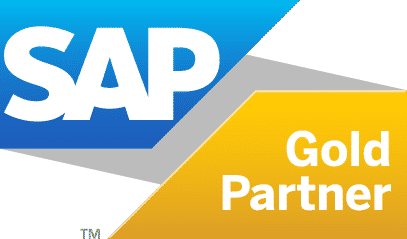
In the fast-paced and ever-evolving business environment, achieving and sustaining a competitive edge requires efficient and streamlined operations. Among the various resources available to organizations, Enterprise Resource Planning (ERP) software and Enterprise Resource Management (ERM) have emerged as foolproof systems for optimizing resources, streamlining processes, and facilitating data-driven decisions. Enterprise Resource Management (ERM) and Enterprise Resource Planning (ERP) are two different systems that work together to make enterprises function better Enterprise Resource Management (ERM) has everything to do with using tools, materials, people, and technology in the best possible manner. ERP, on the other hand, is like a smart system that puts all parts of a business, like accounting, manufacturing, sales, and marketing, into one place. It saves time by minimizing manual efforts and helps various departments communicate and coordinate better. They add great value to organizations that seek to optimize their processes.
Let us look into how Enterprise Resource Planning and Enterprise Resource Management implementations work in tandem to reap benefits for an organization.
1. Enhanced Resource Allocation- The Enterprise Resource Management Advantage
Effective resource management is the core of an ERP system, and its true potential is reached when this goal is achieved. Enterprise Resource Planning software empowers businesses to comprehensively manage their resources, financial assets, materials, and equipment. By consolidating all pertinent data into a single, unified platform, decision-makers gain a holistic view of resource availability and its utilization. This results in improved resource allocation strategies, the minimization of waste, and optimizing efficiency across the organization.
2. Improved Process Efficiency– Streamlining Processes and Operations with Enterprise Resource Planning( ERP)
Enterprise Resource Planning (ERP) serves as a catalyst for keeping efficiency thriving in an organization. Enterprise Resource Planning (ERP) streamlines business processes by automating routine tasks, getting rid of isolated pockets of information, and promoting teamwork across departments.
For example, in manufacturing, Enterprise Resource Planning (ERP) systems contribute greatly to the management of critical functions such as inventory control, order processing, and production planning. By automating these processes, Enterprise Resource Planning(ERP) not only expedites operations but also reduces the risk of perennial bottlenecks like overstocking or running out of stock. Enterprise Resource Management (ERM) serves to make operations smoother and more agile.
3. Enhanced Decision-making via insights from ERP
Informed decisions form the core of a successful business. Enterprise resource planning (ERP) helps them get better equipped by facilitating real-time data and data analytics. ERP provides actionable insights into assessing trends, measuring performance, or evaluating resource allocation. These insights help enterprises adapt to the changes in a dynamic market at a fast pace. In a dynamic market, ERP is akin to a strategic partner that equips one with valuable insights and information needed to make informed decisions.
4. Streamlined Communication and coordination among Departments
Coordination between departments is very important. Enterprise Resource Planning (ERP) enables a free flow of communication across departments by providing centralized data that is accessible to the concerned teams. This results in improved communication, better coordination, and an increase in productivity.
Let us consider two departments, sales and finance ERP provides centralised data on customer information and financial data to prevent any errors in sending invoices and tracking payments. This results in improved communication, better teamwork, and an overall boost in productivity. The system makes it conducive to tasks being performed efficiently and enables the enterprise to focus on delivering quality products and services to customers.
5. Elevated Customer Relations
Effective Enterprise Resource Management has a positive impact on customer relations as well. ERP Software sometimes includes CRM modules that help enterprises deal with customer relationship management, service requests, and sales leads. This results in improved customer satisfaction and loyalty as a result of a personalized customer experience. ERP facilitates personalized service and quick response to customers by keeping all customer information in one place. In essence, ERP not only manages resources but also builds strong customer relationships. This results in improved customer satisfaction and loyalty.
6. Regulatory Compliance and ensuring adherence via accurate records
Automating record-keeping, generating accurate records, and providing clear audit trails that enable one to trace back and verify transactions or actions taken within the system. It helps reduce fines, avoiding legal issues and any damage to reputation. Accurate records and transparency make it easier to prove compliance with regulations, demonstrate financial integrity, and resolve any disputes that may arise. Enterprise resource planning (ERP) serves as a guardian for both the financial well-being and reputation of the enterprise and
7. Scalability and Flexibility
As enterprises grow, so do their resource management needs, which tend to get more multi-faceted and complex. Enterprise Resource Planning Software facilitates scalability as it is designed to grow with the enterprise. Whether the growth is in terms of venturing into new markets, diversifying product lines, or global expansion plans, the Enterprise Resource Planning (ERP) software matches the growing needs, however complex. Enterprise Resource Planning (ERP) ensures that resource management remains efficient and effective while the enterprise continues to grow. This adaptability ensures that resource management continues to be optimized and effective.
8. Savings in costs
While ERP requires an initial investment, in the long run, the savings are substantial. Enterprise resource management, fortified by Enterprise Resource Planning (ERP), plays a pivotal role in considerable cost savings for the enterprise by optimizing resource management, minimizing manual errors, and mitigating losses. Enterprise Resource Planning (ERP) contributes significantly to the reduction in costs over a period of time. Moreover, the enhanced decision-making capabilities made possible by Enterprise Resourceplanning (ERPP) and Enterprise Resource Management ( ERM) often result in profitable strategies. The combined effort results in better financial health of the enterprise.
In conclusion, while Enterprise Resource Planning (ERP) and Enterprise Resource Management (ERM) may have different approaches to databases, each plays a pivotal role in the efficient use of resources, minimizing waste, and maximizing efficiency. Crucial to an Enterprise’s growth and expansion.




